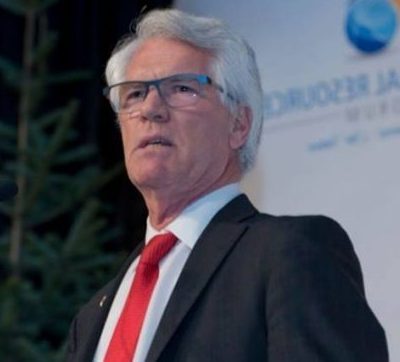
New structure separates environmental assessments and energy infrastructure regulation
Jim Carr, the Canadian minister of natural resources, was in Calgary Thursday to announce that the federal government is changing the way major resource projects, such as pipelines, are assessed and regulated.
The National Energy Board currently performs those functions, which will now be split between two new agencies, the Canadian Energy Regulator and the Canadian Environmental Assessment Agency, according to a Government of Canada press release.
The CER, which will remain in Calgary, will have independence and accountability to oversee a strong, safe and sustainable Canadian energy sector for the 21 century, reducing timelines for project reviews by managing them better and making sure there are fewer stops of the legislated clock, according to the release.
“A new wave of resource development is coming with more than $500 billion in projects planned over the next 10 years. We are building a better Canada, where investors, companies and all Canadians can have confidence that good projects will be approved in a timely manner and held to the highest standard,” Carr said in the release.
“With these better rules, we will demonstrate how we can grow the economy and get our resources to market while advancing reconciliation with Indigenous Peoples and protecting the environment for future generations.”
For major new energy projects, the CER will work with the new Environmental Impact Assessment Agency (which will replace the Canadian Environmental Assessment Agency) to provide recommendations in a single, final report.
For all other projects, the CER will retain its existing responsibility to review.
” This new agency would work in partnership with federal regulators to deliver a single, consistent and predictable assessment process for designated projects and coordinate upfront work and consultations with Indigenous peoples,” said Carr.
“It will look at how a project could affect not just our environment, but also communities and health, the rights of Indigenous peoples, jobs and the economy over the long run.”
The government conducted a 14-month review that included an expert panel, which reported last May. Natural Resources released a discussion paper in late May with specific proposals that favoured indigenous communities and reformed supported by environmental groups.
“We heard from a wide range of Canadians that previous reforms to environmental laws put our environment, fish and waterways at risk and eroded public trust. We listened and took action to fix this. With better rules for major projects, our environment will be cleaner and our economy stronger,” said Catherine McKenna, minister of environment and climate change.
“Making decisions based on robust science, evidence and Indigenous traditional knowledge, respecting Indigenous rights, and ensuring more timely and predictable project reviews will attract investment and development that creates good, middle-class jobs for Canadians.”
Carr says that the Stephen Harper Conservative government eroded public trust in the environmental and regulator processes and, “the key is a modern environmental and regulatory system that is truly open and transparent — and our new approach delivers that, starting with these two important changes.”
“Canadian Energy Regulator will reflect Canada’s changing energy needs, with an expanded mandate to review traditional and renewable sources of energy,” he said, acknowledging the announcement was taking place in the traditional territory of the Blackfoot and the people of the Treaty 7 region in southern Alberta.
“We know some people will disagree with the changes we’re making. That’s the nature of this world. Some will argue no changes are needed, and others will say more needs to be done.”
The proposed changes include:
- Restoring public trust: We will increase public participation in project reviews, including a new early engagement phase. From the outset, we will recognize Indigenous rights and work in partnership with Indigenous Peoples.
- Transparent, science-based decisions: We will ensure decisions are based on robust science and Indigenous traditional knowledge, and make easy-to-understand summaries of decisions publicly available.
- More comprehensive impact assessments: We will be replacing the Canadian Environmental Assessment Act, 2012, with the Impact Assessment Act, and expanding the types of impacts studied to understand how a proposed project could affect not just our environment, but also health, social and economic impacts, as well as impacts on Indigenous Peoples, over the long-term. Reviews will include gender-based analysis.
- One project, one review: We will reduce duplication and red tape by establishing the Impact Assessment Agency of Canada (currently the Canadian Environmental Assessment Agency) to lead all federal reviews of major projects, working with other bodies like the new Canadian Energy Regulator (currently the National Energy Board), the Canadian Nuclear Safety Commission and Offshore Boards, and in cooperation with provinces and territories and Indigenous jurisdictions.
- Making decisions timely: Project reviews would benefit from reduced timelines compared to the current system, and will be rigorously managed to ensure they are more timely, with fewer stops of the legislated clock.
- Revising the project list: We are seeking Canadians’ feedback on a more robust project list, identifying types of projects within federal jurisdiction that could pose major risks to the environment and would therefore require review.
- Protecting water, fish and navigation: Restoring lost protections for all fish and fish habitats – not just those that could be affected by major projects – by amending the Fisheries Act. Further, protections under the Canadian Navigable Waters Act (currently the Navigation Protection Act) will be expanded to better protect the right to travel on all navigable waters in Canada, covering countless rivers, lakes and other waterways. This includes extra protections for those waterways most important to Canadians and Indigenous Peoples.
- Increased funding: The government will invest up to $1.01 billion over five years to support the proposed new impact assessment regime and Canadian Energy Regulator; increased scientific capacity in federal departments and agencies; changes required to protect water, fish and navigation; and increased Indigenous and public participation.


Be the first to comment